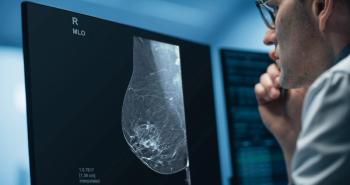
New mammography technique avoids limitations of older technology
Looking for breast cancers with x-ray mammograms can be like searching for a snowball in a snowstorm. A new imaging technique, positron emission mammography (PEM), circumvents many of the limitations of the imaging techniques most commonly used to screen for breast cancer.
"This tool is very sensitive, specific, and it gives us great clarity and confidence in diagnosing new cancers," said Dr. Kathy Schilling, the lead researcher and director of breast imaging and intervention at the Center for Breast Care at Boca Raton Community Hospital in Florida.
Dense breast tissue and hormonal status often complicate screening and can lead to inaccurate results.
"Our oldest and most conventional tools are mammography and ultrasound," Schilling said at a news conference at the RSNA meeting Tuesday. "With mammography, particularly in patients who have dense breasts, we can miss as much as 35% of cancers that we know are in a breast."
Dense breast tissue is characterized by a large proportion of tissue that is glandular rather fatty. On mammograms, this glandular tissue appears white. However, cancerous tissue also appears white and can be mistaken for glandular tissue. With breast MRI, this problem is avoided by taking advantage of differences in cellular processes. The test is limited, though, by a high incidence of false-positives.
"You can imagine being called back and having found out that there's something abnormal on your MRI and having to have an additional ultrasound or mammography only to find out there was really nothing at all," Schilling said. "That is very disturbing for our patients."
Additionally, breast MRI is much less effective when patients are imaged at an inappropriate point during their menstrual cycle. False-positive results are often attributed to the effects of hormones in the patient.
Breast density and hormonal status will not affect PEM sensitivity or specificity when screening for cancer, Schilling said. The technique uses the metabolic differences between cancer cells and normal cells to distinguish them. By following where radioactively marked sugar accumulates, PEM can easily visualize cancerous tissue.
"I find it very easily integrated into a comprehensive breast clinic," Schilling said. "It's not difficult to learn, unlike breast MRI, and it's not affected by menopausal status or breast density."
Newsletter
Stay at the forefront of radiology with the Diagnostic Imaging newsletter, delivering the latest news, clinical insights, and imaging advancements for today’s radiologists.




























